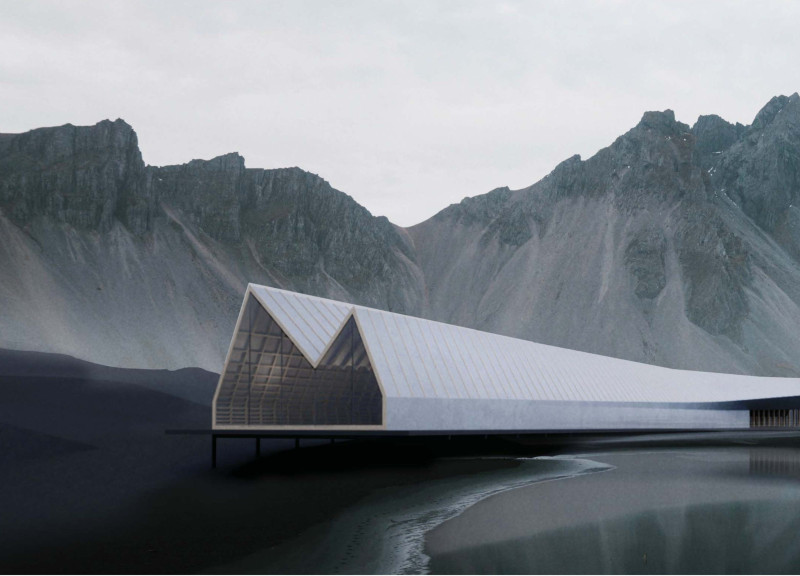5 key facts about this project
The Iceland Greenhouse Restaurant is located in the rugged landscape of Iceland, where the natural environment plays a vital role in its design. It combines the functions of a greenhouse and a restaurant, creating a space that supports both food production and dining. The concept focuses on enhancing the connection between guests and the surrounding nature, with an emphasis on sustainability.
Architectural Form
The building’s form is based on a traditional greenhouse, shaped to fit the local landscape. Inside, the layout is designed for easy movement and accessibility. Guests enter through a welcoming corridor that divides different areas. This design provides direct access to the greenhouse, while also allowing visitors to navigate administrative and service spaces with ease.
Orientation and Light
The building is oriented to capture sunlight from the south, which is essential for plant growth. The roof features a split design that adds character to the structure, creating a profile that complements the nearby mountains. This careful attention to orientation allows natural light to play a significant role in both the greenhouse and the restaurant, enhancing the experiences within.
Materiality
The facade is made of polycarbonate panels, which serve multiple purposes. These materials provide an attractive appearance while also ensuring efficient use of sunlight. They allow light to enter the building while preventing heat from escaping, which is important for maintaining a comfortable environment inside. This choice of materials reflects a focus on sustainability and the functional needs of the space.
Visitor Experience
As guests move through the plant-lined corridor, they engage with the idea of growing food. This design element connects the experience of dining with the behind-the-scenes work of agriculture. Upon entering the restaurant area, visitors are met with expansive views of the valley, further emphasizing the natural connection. The entrance features a distinctive fold that invites visitors in, marking the building as a place that celebrates both culinary arts and agriculture.






















































